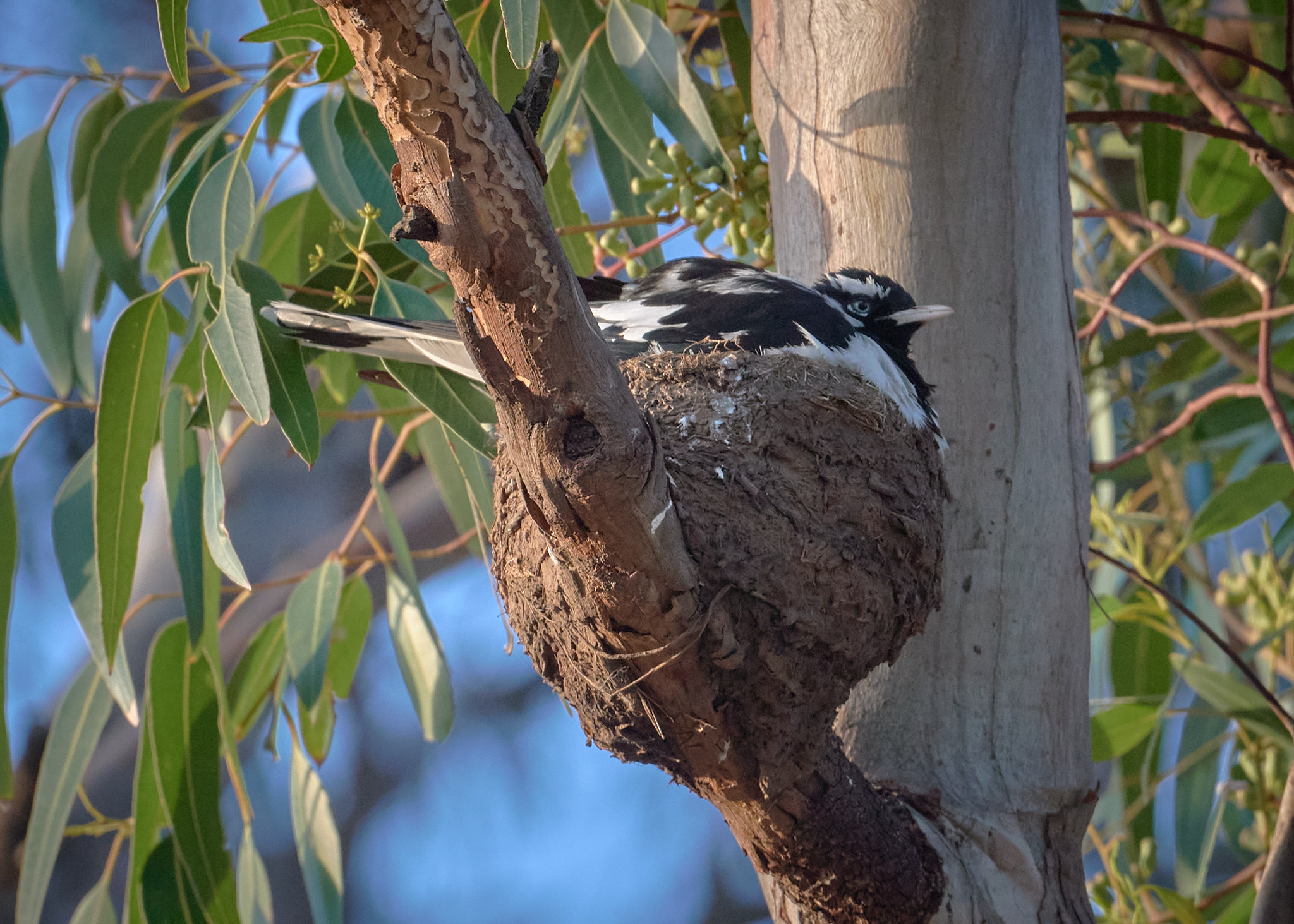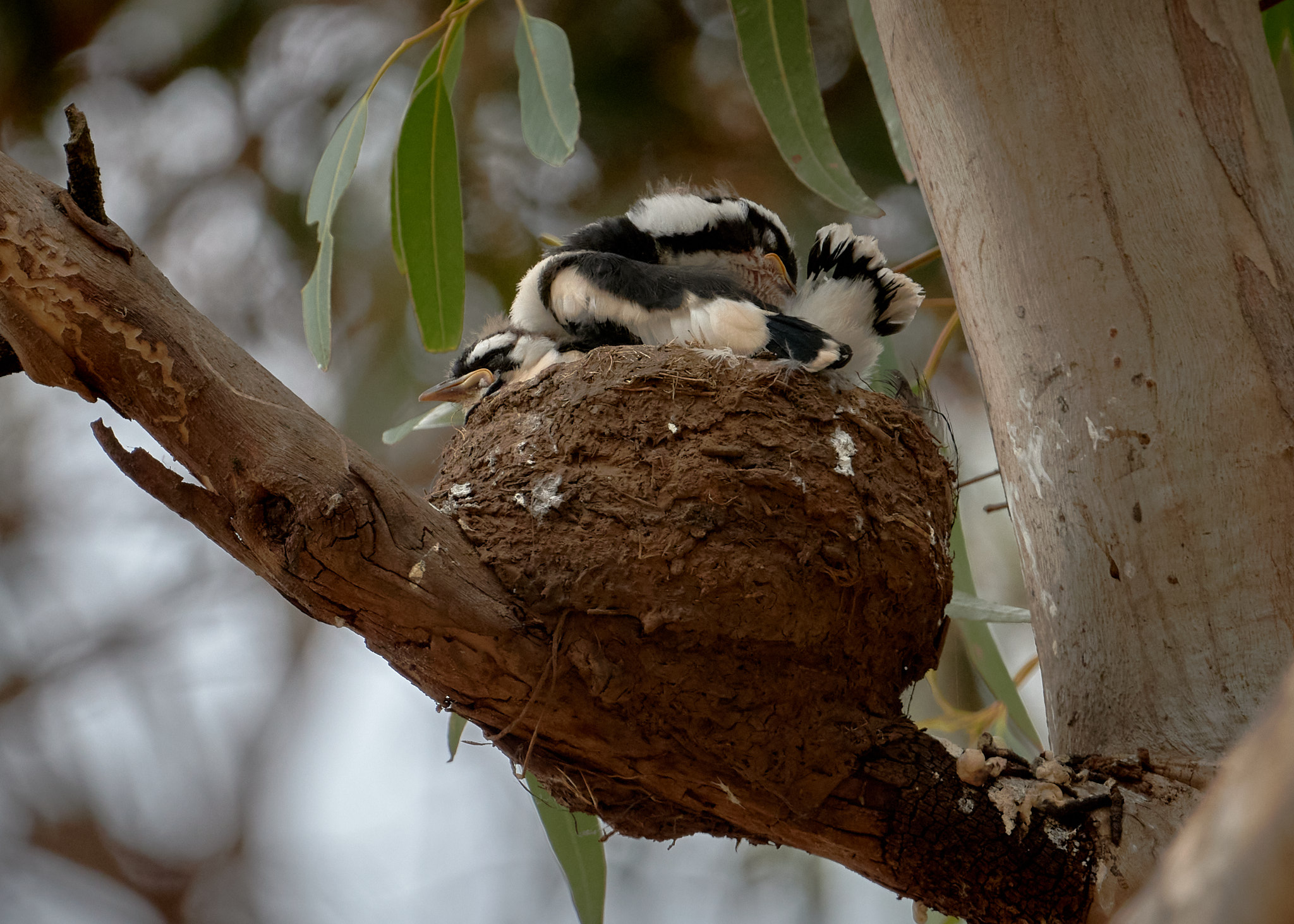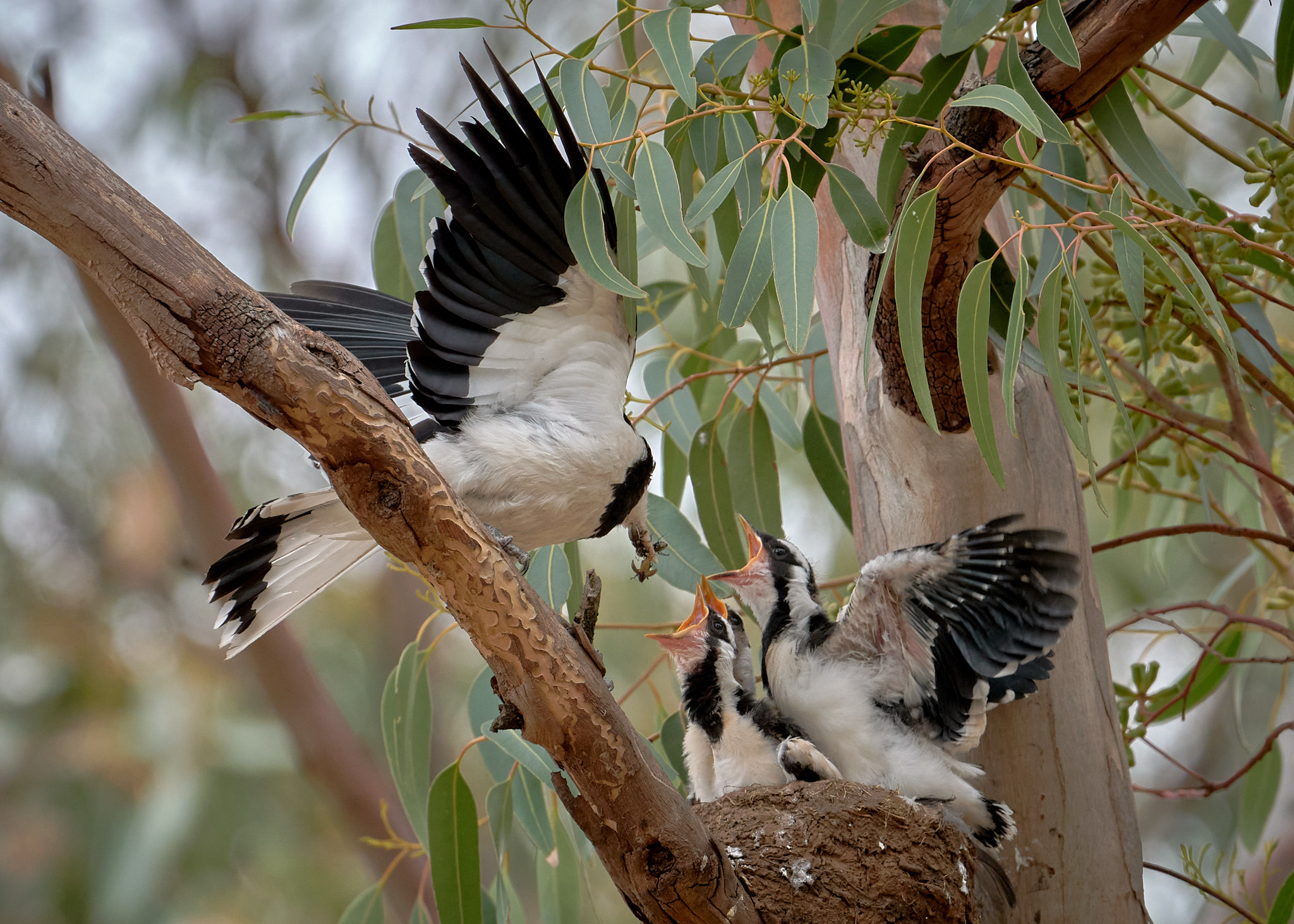Those that know me well, will tell you that I have a distinct appreciation for Magpie-larks.
Goes all the way back to a young kid chasing them along the irrigation channels where I grew up.
Muddies, Mudlarks, Peewees, all names that these fiesty little birds have been called.
I think we all appreciated as little kids that Muddies could play about in puddles of water, and not get told off. A sneaking respect for them so developed.
Their antics are numerous, and among them are the range of calls that they have. Ask them, “How deep is the water?” and they’ll respond with a shrill, “Knee-deep”. They also have a charming duet call, first he calls, then she answers.
They also love to fly together, land, and go through a wing-waving technique with lots of shrill calls.
They also have the into and out of the nest down to an art form. The incoming one calls to announce arrival, and as it drops in, the other one departs.
To a casual observer it would seem that a bird flew into, and then out of the tree. The amount of time for the change over, is not much more than the blink of an eye.
We have one that visits the local front garden, its a female. She has worked out, I think, that the concrete aand metal fences nearby will amplify her call, and it is really quite penetrating.
Recently I also learned that their mud-nest building is a little more complicated and explains an odd thing that I’ve seen from time to time. Occassionally I would find a nest in one tree, and another nest nearby, but the second nest was never used. Seems that Muddies get a bit confused, or excited about nest building, and after looking at several sites, they seem to select one, and start work, but also begin work on a second one as well. Eventually, both harmonise and one nest gets completed.
This clutch is at least their second for this season, and there was no confusion about the nest location. Both worked on it.
The pictures tell the rest of the story.











Once they fly, there will be no holding them, so its all over so quickly.
Enjoy

What a beautiful series of photographs of the family – delightful!
LikeLiked by 1 person
Hello Eleanor, I’m glad you liked it, at first I was only going to put a couple on Flickr, but felt there was enough to enjoy the whole process here
LikeLiked by 1 person
Definitely!
LikeLike
Wonderful story telling! Lovely to see the young almost fledging!
A fine series of images, David!
LikeLiked by 1 person
Thanks David, I guess next time, the nest will be empty and lots of plaintive calls from the trees as the young chase the parents about
LikeLiked by 1 person
Another amazing series captured David. Yes these active little characters are noisy when they alarm. I was attacked by one some months ago, so I must have been near a nest and not know it. Building more than one nest is an interesting phenomenon which does occur in several birds. Some use it as a decoy, others for a go to nest if the fear of nest usurpation and nest parasitism occurs. They are clever enough to foresee the possibility of needing a go-to-place. Some birds build 3 nests. The most common building of a second nest is as a decoy nest, and particular small birds in sock nests are prone to do this, with the second nest not far from or on top of the first but more visible than the occupied one. While there is much more research to be done on this behaviour these are the offered possibilities from observations so far. The Yellow-rumped Thornbill apparently build their dome shaped nest where they lay their eggs, and build a decoy cup shaped nest on top of it, accessing the real nest from below. I know of several others that build decoys such as crows and some wrens, but I can’t think of the bird I saw at O’Reillys that was shown me. Interesting how clever these guys are, having such wisdom and foresight.
LikeLiked by 2 people
Hi Ashley, an interesting thought. HANZAB suggests its from confusion, but it maybe a defensive method.
We used to monitor Red-capped Robins over a number of seasons, and discounting predation, they might have as many as 4 or 5 nestsites actively being visited, but only one with eggs. I do have to say, that the Robins at Woodlands had a very low success rate.
Of late from reports the numbers of them out there has fallen dramatically.
Hard to show in photos, but they have a wonderful way of sort of wafting about in the air, almost like a butterfly. Seems to take no effort at all.
Fascinating little creatures that always bring a smile
LikeLiked by 1 person
It was a delightful journey to read your blog as more than a top-up on the Flickr post, David. I also enjoyed the discussion on the double nests. There are so many interesting things about birds behaviour. Back to the Mudlarks – I really like this name – they are such photogenic creatures and their vocal capabilities always make me smile. Once I spent good quarter of an hour watching a female fighting her reflection in a shiny drinking fountain. It was so lovely that I even posted 3 captures on Flickr. I suppose we both had a great time then. This nest series is again worth a Natural Geographic publication.
LikeLiked by 1 person
Thanks Adam,
They do seem to be one of the best birds for getting into trouble with their own reflection.
I once worked with a company that had installed motion detectors around the windows.
Muddie would set the alarms off at all sorts of odd daylight hours. 🙂
LikeLike